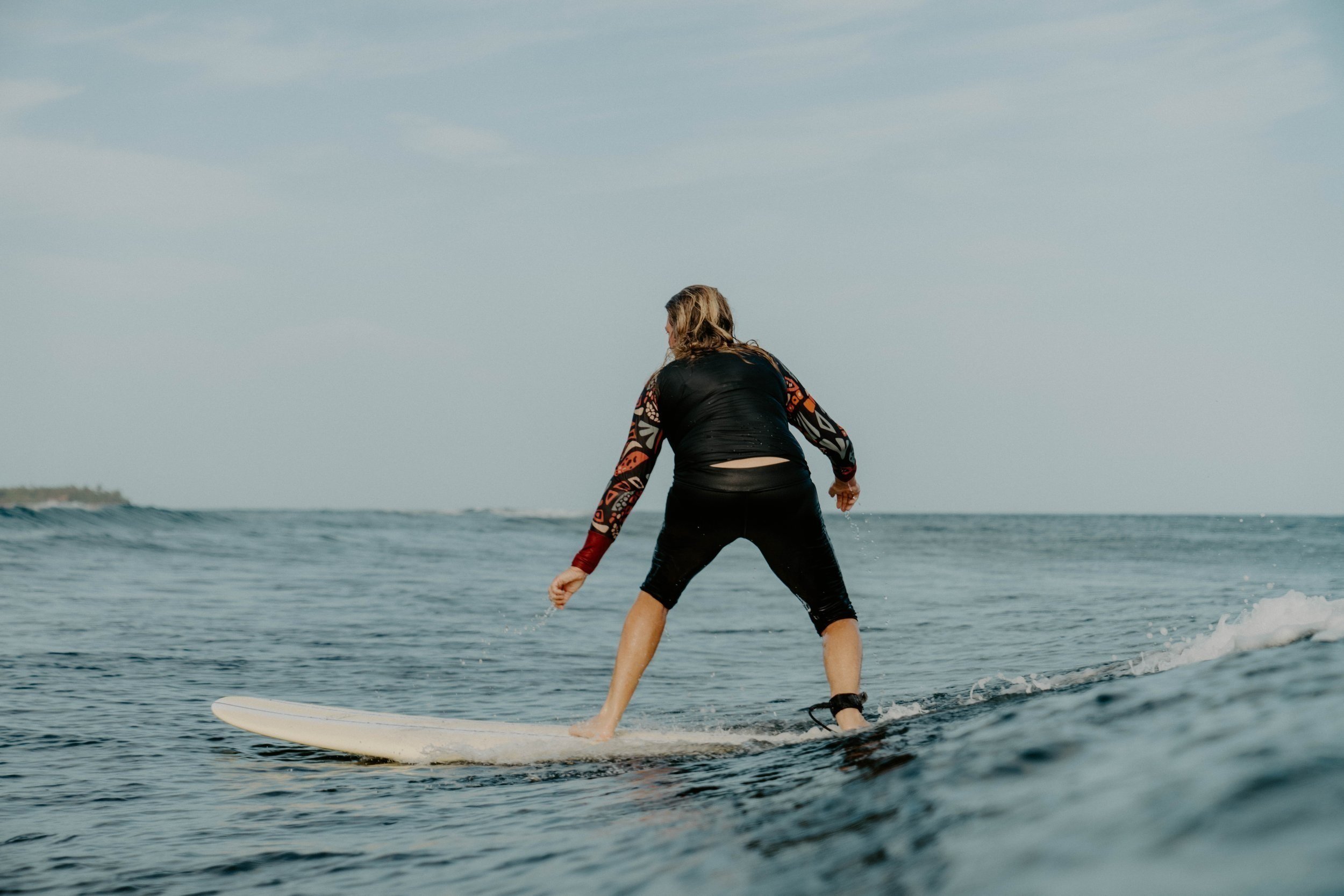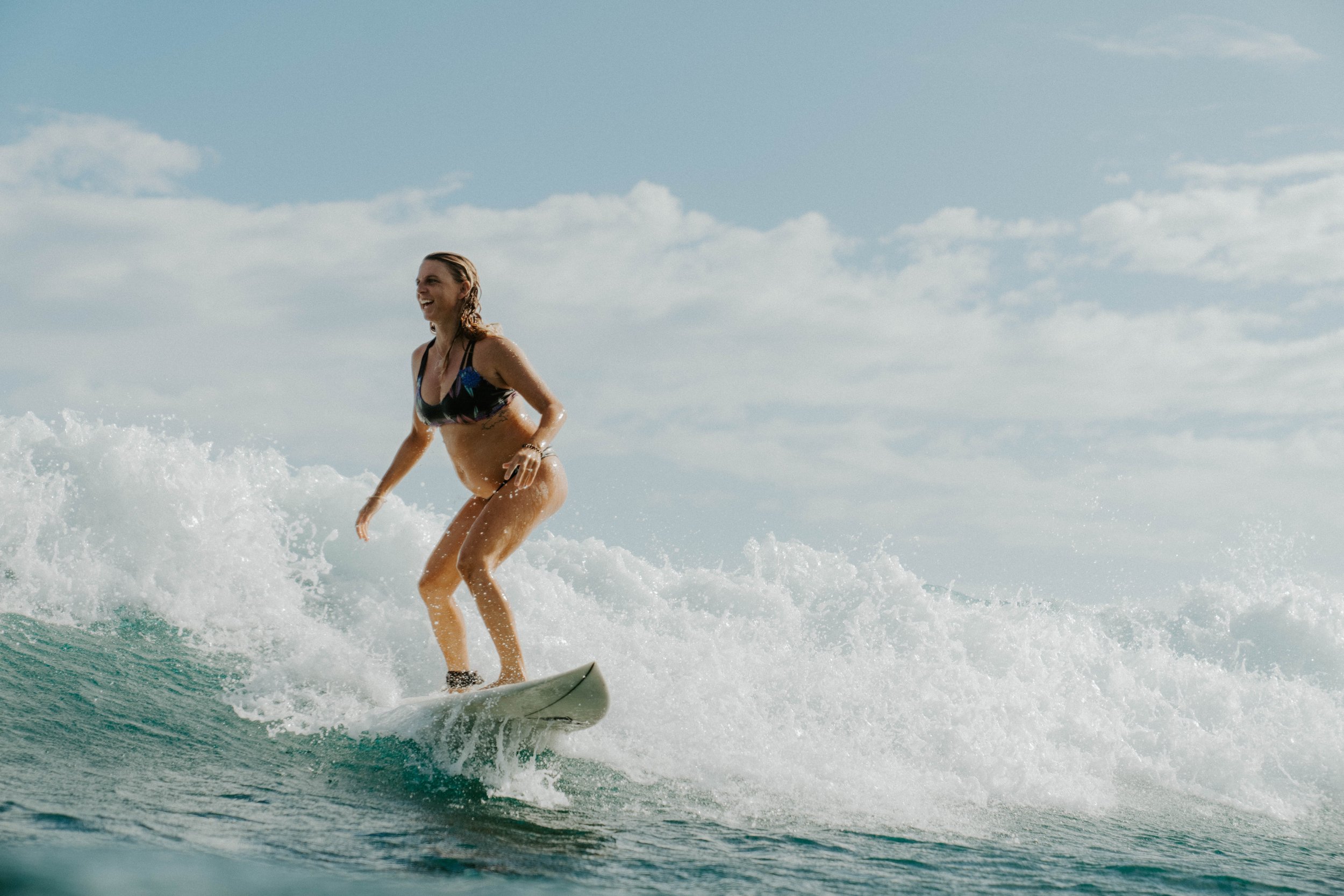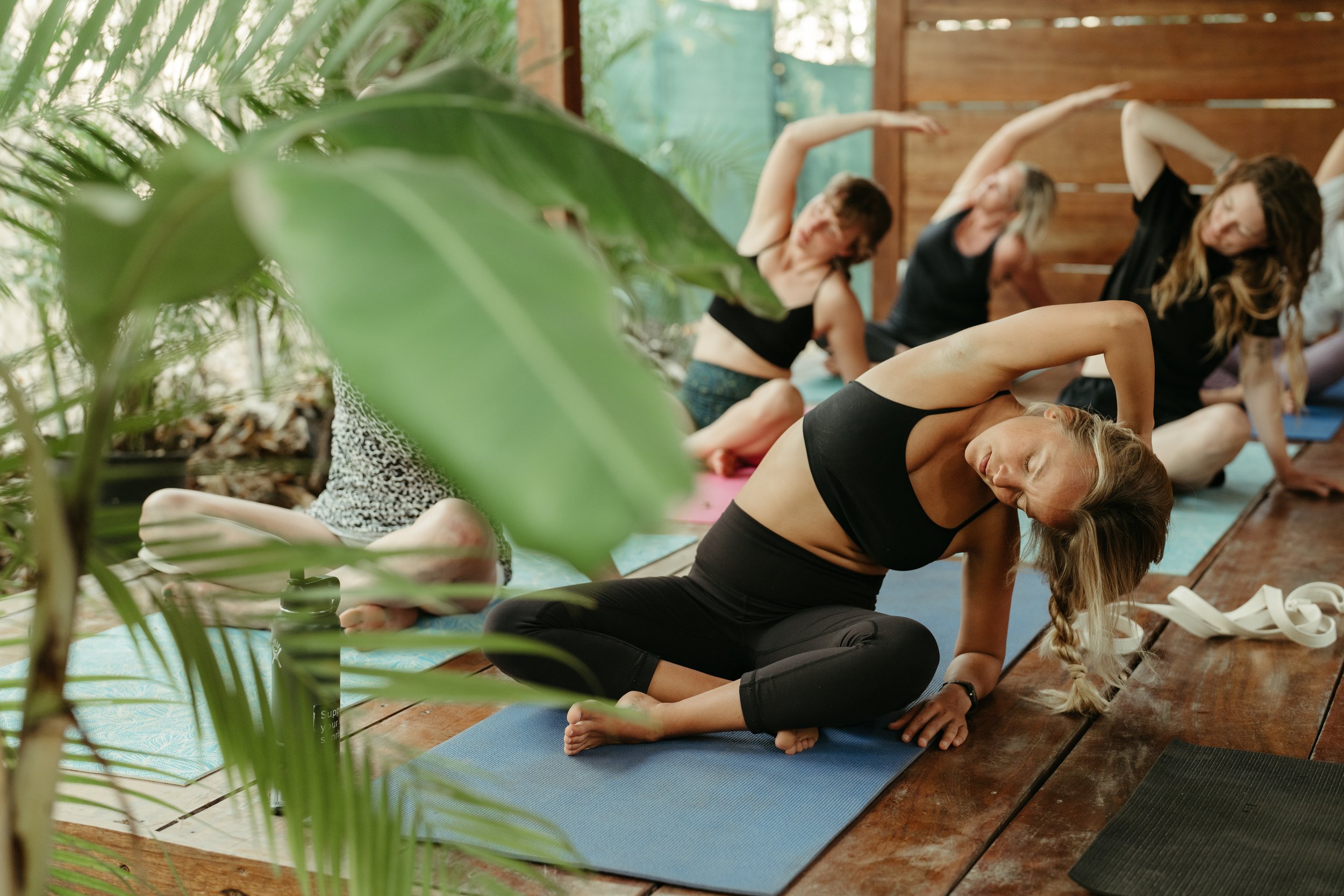Swim: Swimming is the best exercise to build strength and endurance for paddling on surfboards. It also helps to increase lung capacity and stamina and regulates your breathing. Try to swim at least twice a week for 6 weeks before your trip. Freestyle swimming is most similar to paddling.
Sun Salutation: This short yoga sequence will help with building strength and flexibility. Start by doing 5 rounds of Sun Salutation 3x days a week. It’s a short workout that shouldn’t take more than ten minutes.
Push-ups: start with 5 push-ups a day either on your knees or feet.
Pop-ups: POP UP 101 — Sister Surf & Yoga Retreat Find the pop-up that works for you and incorporate it into your routine
Paddle: If you can access a surfboard, start paddling for 10 minutes daily.
Doing just one of the above exercises will really help to physically prepare you for your trip.














